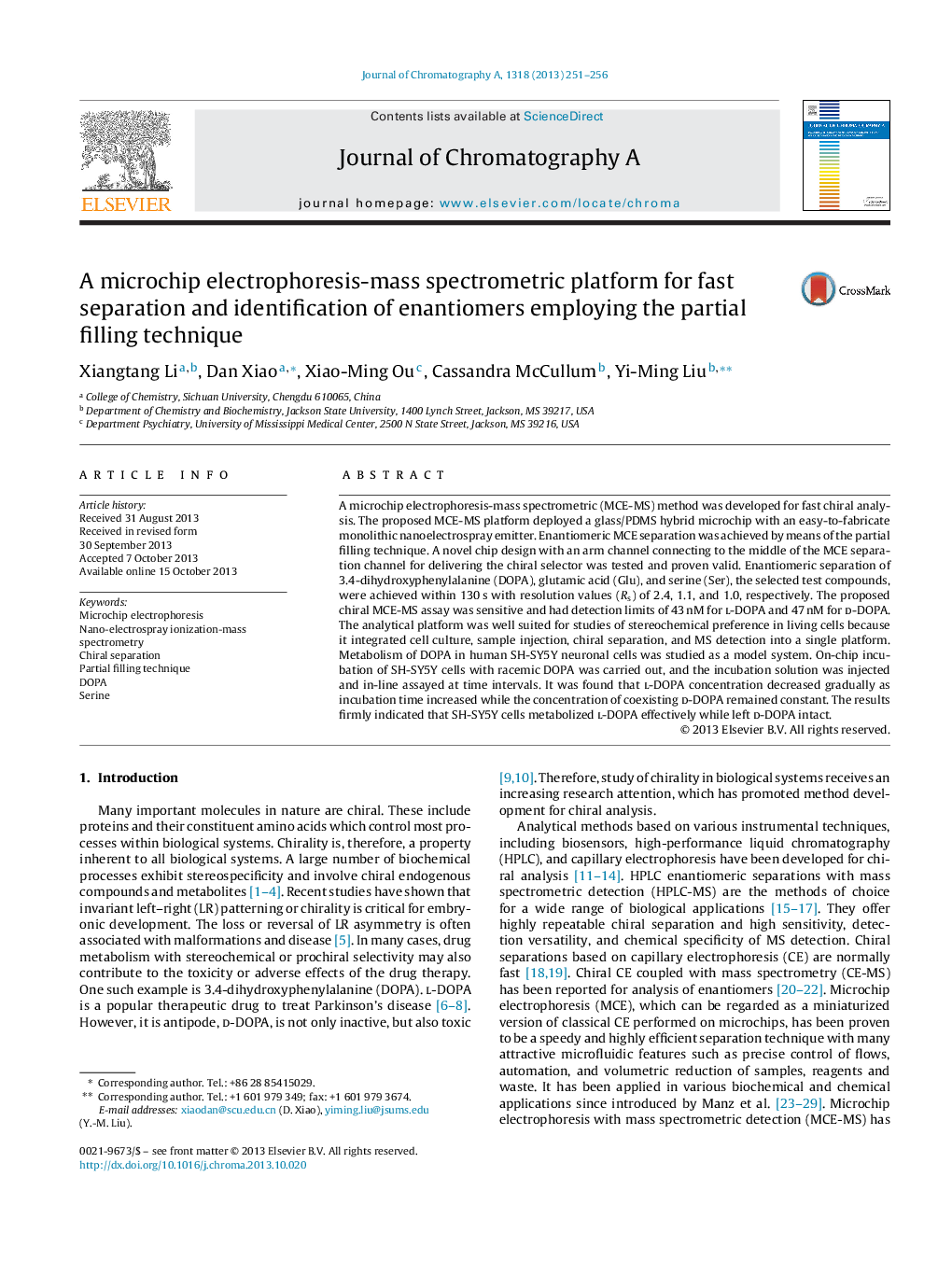| Article ID | Journal | Published Year | Pages | File Type |
|---|---|---|---|---|
| 1200863 | Journal of Chromatography A | 2013 | 6 Pages |
•A chiral microchip electrophoresis-mass spectrometric method employing the partial filling technique.•Fast separation and identification of enantiomers by MCE-MS.•Chiral electrophoretic separation of underivatized amino acids.•Stereochemical selectivity in drug metabolism by neuronal cells.
A microchip electrophoresis-mass spectrometric (MCE-MS) method was developed for fast chiral analysis. The proposed MCE-MS platform deployed a glass/PDMS hybrid microchip with an easy-to-fabricate monolithic nanoelectrospray emitter. Enantiomeric MCE separation was achieved by means of the partial filling technique. A novel chip design with an arm channel connecting to the middle of the MCE separation channel for delivering the chiral selector was tested and proven valid. Enantiomeric separation of 3.4-dihydroxyphenylalanine (DOPA), glutamic acid (Glu), and serine (Ser), the selected test compounds, were achieved within 130 s with resolution values (Rs) of 2.4, 1.1, and 1.0, respectively. The proposed chiral MCE-MS assay was sensitive and had detection limits of 43 nM for l-DOPA and 47 nM for d-DOPA. The analytical platform was well suited for studies of stereochemical preference in living cells because it integrated cell culture, sample injection, chiral separation, and MS detection into a single platform. Metabolism of DOPA in human SH-SY5Y neuronal cells was studied as a model system. On-chip incubation of SH-SY5Y cells with racemic DOPA was carried out, and the incubation solution was injected and in-line assayed at time intervals. It was found that l-DOPA concentration decreased gradually as incubation time increased while the concentration of coexisting d-DOPA remained constant. The results firmly indicated that SH-SY5Y cells metabolized l-DOPA effectively while left d-DOPA intact.
